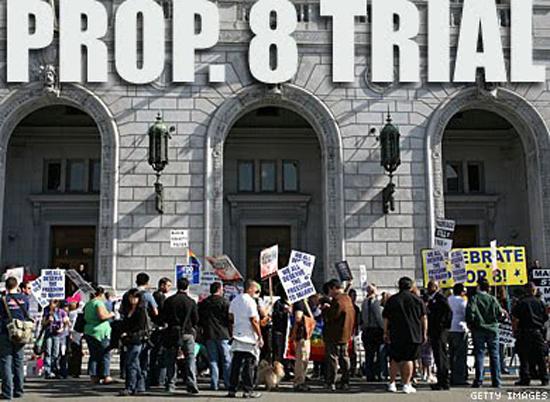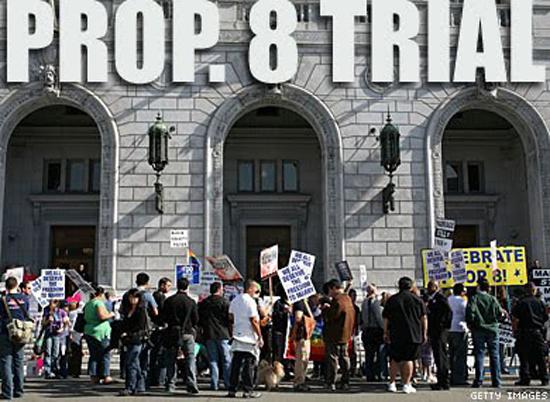The court might step into Arizona case over same-sex benefits in its new term
By Lyle Denniston
SCOTUS/blog
 The Supreme Court might get its first look at the same-sex marriage issue — including the test case over California’s famous “Proposition 8″ — when the Justices assemble in private on September 24. The court’s electronic docket noted on Wednesday that the California case, as well as a somewhat related Arizona case and one of the cases involving the federal Defense of Marriage Act, were set for that conference. There are other DOMA cases pending, and others are yet to be filed, so they apparently will not all be ready for the court’s initial look then.
The Supreme Court might get its first look at the same-sex marriage issue — including the test case over California’s famous “Proposition 8″ — when the Justices assemble in private on September 24. The court’s electronic docket noted on Wednesday that the California case, as well as a somewhat related Arizona case and one of the cases involving the federal Defense of Marriage Act, were set for that conference. There are other DOMA cases pending, and others are yet to be filed, so they apparently will not all be ready for the court’s initial look then.
Cases are distributed to the Justices more or less automatically when the clerk’s office finds that the initial filings are complete, or soon will be. That does not necessarily mean that the court will act on them after the initial examination; in fact, the court has the option of putting them off for analysis later. It sometimes does that when a number of cases are related, but some are not yet ready.
Although the court took the unusual step during its summer recess of granting three new cases for review, its usual practice is to wait until its first conference near the opening of a new term to accept cases from the batch most recently filed. The September 24 private meeting, coming a week before the new term opens, often produces a fairly lengthy list of new grants. None are known in advance, however. Although most of the Justices have spent considerable time away from Washington during the summer recess, their clerks have been working away on recommendations of which, if any, new cases to grant.
It is predictable, but not a certainty, the court will step into the heated controversy over same-sex marriage in its new term. That’s because several federal courts have struck down a key section of the Defense of Marriage Act, passed by Congress in 1996 in an attempt to head off what the lawmakers thought was likely to be a spreading movement in the states to create an equal right for same-sex couples to wed. DOMA’s Section 3 — affecting more than 1,000 federal laws — restricts marriage benefits or provisions in any federal statute to marriages of a man and a woman.
The DOMA cases now at the court, or on the way, do not require the justices to rule on whether there is a legal right of marital equality for gays and lesbians. That’s because the challengers to Section 3 have already been married legally under the laws of their own states. Their challenges are now supported by the Obama Administration. The defense of DOMA has been taken up by the Republican leaders of the U.S. House of Representatives.
The one DOMA case distributed for the September 24 conference is Windsor v. United States. That is a request by a New York woman, now a widow, seeking to avoid paying federal estate taxes on the estate of her former same-sex spouse. They were married in Canada before New York legalized such marriages. The petition in that case asked the Supreme Court to hear it without waiting for review by the Second Circuit Court in New York. The federal government plans to file a similar petition in that case, probably soon.
The Proposition 8 case now set for the first fall conference is Hollingsworth v. Perry. The case was started in 2008 in an attempt to establish an equal right to marry for same-sex couples across the nation. But, as it emerged most recently from the Ninth Circuit Court, it does not raise directly the question of whether there is such a right under the Constitution. Rather, the Ninth Circuit ruled that, if a state once grants a right to same-sex marriage, as California did, it is unconstitutional to take away that right, at least when the decision to do so was the result of hostility to the sexual identity of gays and lesbians.
As the filings have come in in that case, however, some advocates who opposed such marriages are seeking to have the court make clear that there is no such right to marital equality. The argument is that, since same-sex couples are in fact different from opposite-sex couples, there is no constitutional problem in treating them differently for marriage purposes because they are not in the same grouping under the Constitution. That case also raises the issue of whether the Supreme Court has already given the states clear-cut authority to refuse to allow same-sex marriages, by a summary, one-sentence ruling it issued in 1972 in a Minnesota case.
The third case now listed for the September conference is Brewer v. Diaz. That does not address same-sex marriage explicitly; rather, it tests whether a state, refusing to allow gays and lesbians to marry, may deny them marital benefits if one member of the couple is a state employee, while providing those benefits to state workers who are in opposite-sex marriages. The Ninth Circuit has ruled that such differing treatment is unconstitutional.
Also:
Group Asks High Court to Stay Texas Elections to Congress/BusinessWeek









